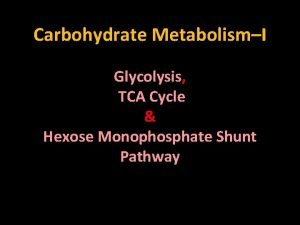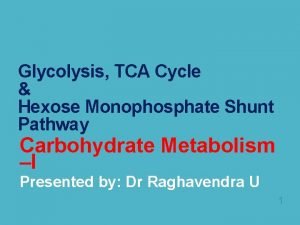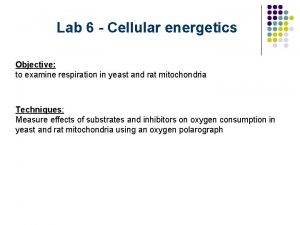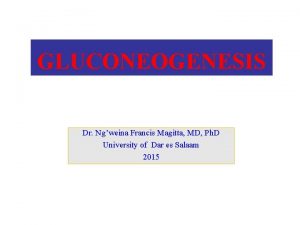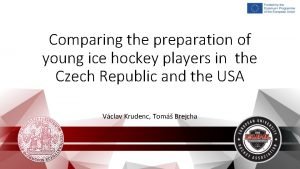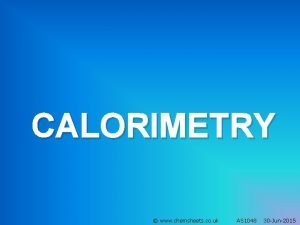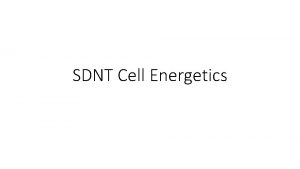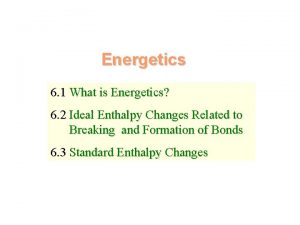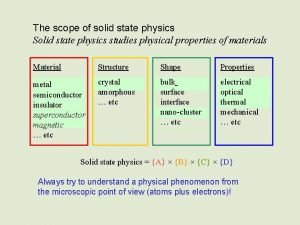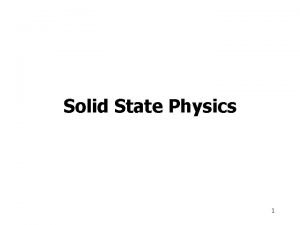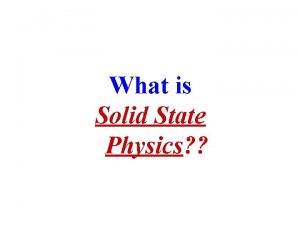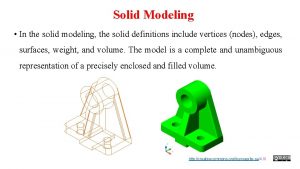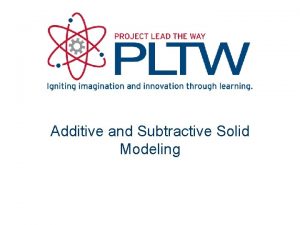INSTITUTE OF PHYSICAL ENERGETICS INSTITUTE OF SOLID STATE














- Slides: 14

INSTITUTE OF PHYSICAL ENERGETICS INSTITUTE OF SOLID STATE PHYSICS Perspectives in Biological Physics Dr. Phys. Leonid Rusevich ESS Latvian Partner Day, Riga, 2. 06. 2016

INSTITUTE OF PHYSICAL ENERGETICS INSTITUTE OF SOLID STATE PHYSICS A few our results in field of biophysics 1. QENS experiment for studying protein (WSCP) dynamics 2. Neutron Dynamics Data Bank for biological macromolecules Molecular flexibility and dynamics are essential for biological function of proteins

INSTITUTE OF PHYSICAL ENERGETICS INSTITUTE OF SOLID STATE PHYSICS Collaboration in the study of protein dynamics in selected photosynthetic processes by neutron scattering Reduction, analysis and interpretation of experimental data QENS Experiment To. F spectrometer FOCUS at the Paul-Scherrer institute, Switzerland λ = 5 Å, ΔE = 0. 123 me. V, Q = 0. 33 ÷ 2. 25 Å-1 , T = 20 K ÷ 300 K. J. Pieper, Professor of Biophysics of Tartu University Sample: Protein (WSCP) was diluted in a buffer solution (300 m. M Imidazole, 20 m. M Na. P and D 2 O). Data reduction and fitting: DAVE software package We have scattering data from Vanadium, Empty Can, Buffer and Sample (WSCP + Buffer). Careful separation of contributions of buffer and protein is required !!!

INSTITUTE OF PHYSICAL ENERGETICS INSTITUTE OF SOLID STATE PHYSICS 140000 60000 Intensity T=260 K T=300 K 70000 Sample Buffer Protein 30000 0 -0, 3 0 Energy [me. V] QENS spectra (summed over all values of Q) at 260 K and 300 K. 0, 3 0 -1 0 Energy [me. V] 1

INSTITUTE OF PHYSICAL ENERGETICS INSTITUTE OF SOLID STATE PHYSICS Model for diffusion in a sphere. 1, 02 R = 1. 9± 0. 3 Å p = 0. 945± 0. 008 EISF 1, 00 0, 98 1, 0 R = 2. 7± 0. 2 Å p = 0. 50± 0. 02 0, 8 0, 96 T=260 K 0, 94 0, 92 0 T=300 K 0, 6 1 2 0, 4 0 1 2 Q [Å-1] Q-dependences of EISF for protein at different temperatures. EISF contains information about the geometry of localized motions. R is the radius of the sphere and p represents the immobile fraction of hydrogen atoms for a given resolution function.

INSTITUTE OF PHYSICAL ENERGETICS INSTITUTE OF SOLID STATE PHYSICS Internal WSCP dynamics HWHMinternal [me. V] 0, 4 T=300 K 0, 3 Di = (3. 4± 0. 4)∙ 10‑ 5 cm 2/s τ = 1. 2± 0. 2 ps 0, 2 0, 1 0 1 2 3 Q 2 [Å-2] Dependence of HWHMi as function of Q 2 for internal protein dynamic at 300 K. 4 5 Jump-diffusion model for Q > 1 Å-1.

INSTITUTE OF PHYSICAL ENERGETICS INSTITUTE OF SOLID STATE PHYSICS Global WSCP diffusion 0, 04 HWHMglobal [me. V] 0, 03 The slope of the linear fit determinates the coefficient of global diffusion. T=300 K 0, 02 0, 01 Dg = (9. 4± 0. 6)∙ 10‑ 7 cm 2/s 0, 00 0 1 2 3 4 Q 2 [Å-2] Dependence of HWHMg as function of Q 2 for global protein diffusion at 300 K. 5 Dg contains a component of both translational and rotational diffusion of protein [1] Perez et al. Biophys. J. , 77, 454, 1999.

INSTITUTE OF PHYSICAL ENERGETICS INSTITUTE OF SOLID STATE PHYSICS QENS Experiment Conclusions 1. We fulfiled careful separation of buffer and protein contributions to total scattering. 2. At room temperature WSCP dynamics can be reasonably modelled by two types of motion: i) internal protein dynamics and ii) global diffusion of the whole WSCP molecule. 3. Numerical values, obtained for the radius of the sphere R and the diffusion coefficients look reasonably and are comparable with values obtained other authors and by other methods. These results are interesting both to neutron and biophysical communities. Results were presented and published e. g. : Conference QENS 2014/WINS 2014, Oral Contributions. May 2014, Autrans, France. L. Rusevich, J. Embs, I. Bektas, H. Paulsen, G. Renger, J. Pieper. Protein and solvent dynamics of the water-soluble chlorophyll-binding protein (WSCP). — EPJ Web of Conferences 83, 02016 (2015).

INSTITUTE OF PHYSICAL ENERGETICS INSTITUTE OF SOLID STATE PHYSICS n. DDB project Mark Johnson Joseph Zaccai Senior Fellow for Biology ILL, Directeur de Recherche CNRS Head of Computing for Science (CS) group ILL UK Associate Director and Head of Science Division (from 1. 10. 2016) In September 2011 Joe Zaccai invited me to take part on setting up a data bank for neutron scattering results on biological molecule dynamics and fulfil the first step - collection and organising the neutron publications in this field.

INSTITUTE OF PHYSICAL ENERGETICS INSTITUTE OF SOLID STATE PHYSICS n. DDB project The aim of setting up the n. DDB is to make the neutron data on biological systems widely available, to expose and give easy access to a body of experimental data for the scientific community. Searching in Pub. Med and Web of Science data bases with the key terms “Neutron scattering” AND “Protein dynamics”. Search was performed for the time period between 1988 and July 2012. More than 300 articles in refereed journals relate to neutron scattering studies of biological macromolecular dynamics were collected in our data base. In future, we hope, the authors will deposit their data into this data bank (not only information about papers, but real experimental data and results of MDS).

INSTITUTE OF PHYSICAL ENERGETICS INSTITUTE OF SOLID STATE PHYSICS n. DDB project The papers were classified into four types: ND (Neutron Data – neutron experiment), MDS (MD Simulation), Review, Methods. Next information was included into data bank: • year and journal of publication • neutron measurement type (elastic, inelastic, quasielastic) • neutron facility • sample state (powder, solution, membranes) • external parameter (temperature, pressure, hydration) • system of study • etc. . . • a few special items more were included for MDS papers. The database allowed us to perform a detailed statistical analysis of publications.

INSTITUTE OF PHYSICAL ENERGETICS INSTITUTE OF SOLID STATE PHYSICS n. DDB project Project will be continued…

INSTITUTE OF PHYSICAL ENERGETICS INSTITUTE OF SOLID STATE PHYSICS Conclusion Information to reflection… Searching in Web of Science (period: 2010 - 2016, address: Latvia) Keywords Neutron scattering & protein Protein & NMR Number of publications 11 (9) 4 564 15 There authors from Latvian Institute of Organic Synthesis in 12 papers (from 15), from Latvian Biomedical Research and Study Centre – in 5 papers… NMR Spectroscopy is alternative and complementary technique to neutron scattering and can yield dynamical information…

INSTITUTE OF PHYSICAL ENERGETICS INSTITUTE OF SOLID STATE PHYSICS Thank You for Your Attention!
 Energetics of hmp shunt
Energetics of hmp shunt Hcoh
Hcoh Define hmp shunt
Define hmp shunt Energetics of oxidative phosphorylation
Energetics of oxidative phosphorylation Energetics power tower 180
Energetics power tower 180 Energetics of gluconeogenesis
Energetics of gluconeogenesis Building energetics
Building energetics Ib energetics
Ib energetics Energetics janesville
Energetics janesville Calorimetry 1 chemsheets answers
Calorimetry 1 chemsheets answers Amorphous vs crystalline
Amorphous vs crystalline Example of solid solutions are
Example of solid solutions are Covalent molecular and covalent network
Covalent molecular and covalent network Crystalline solid and amorphous solid
Crystalline solid and amorphous solid Crystalline solid
Crystalline solid
